Working on an Application that displays images in various sizes as grids, lists (Instagram like), images that take up the whole screen.
Ex. - you might have is a grid view image (not very big), but also this same image is shown in another screen that's almost the size of the entire screen. It's like a blown up version of this. There are also the smaller thumbnails of these images.
Working with the Backend team to come up with an optimal solution.
Questions:
What's the most optimal way to handle images for different screen sizes? I know instagram sends the URLs for high resolution low resolution and thumbnails.
Do we need multiple sizes for each image? example. grid view (do we need a 1x, 2x or 3x) for each image?. or can one size serve all phone screen sizes and we can just set the scale mode in code? Would this be ok even for smaller screen sizes? Would this be a poor experience for smaller phone sizes since they need images. To me this wouldn't be optimal since smaller phones like SE don't have the same processing power as iPhone 8 plus.
If we're using the same API to serve iPhone and Android - how can this api be leverage for android given that they have more image sizes to handle.
Any guidance would be greatly appreciate it.
